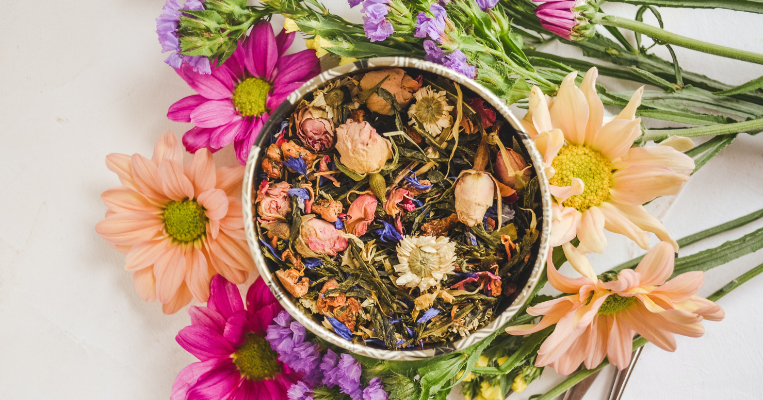
6 February 2023
Spiritual Healing Plants: Amazonian Hapé and Sananga

Amazonian Hapé (Rapé)
Also known as shamanic snuff, Amazonian Hapé is a psychotropic spiritual healing plant used for thousands of years in sacred rituals. Derived from a type of tobacco plant known as mapacho, Hapé isn’t to be smoked like cigarettes but instead administered through the nose.
While tobacco is the main component in Hapé, the final medicine is a mixture of other sacred healing plants. The exact mix of tree barks, leaves, seeds and roots also included is a closely guarded secret by each shaman, meaning each experience is slightly different depending on the combination of the other plants’ healing properties. The ingredients are combined and ground down with a pestle and mortar into a light-coloured powder before being strained through a fine mesh.
Since Hapé is a psychotropic substance, it’s really important to pay attention to your set (mindset) and setting (physical environment). You want to create an internal and external space that feels safe and intentional. For your set, my advice is to go into the Hapé ceremony with a clear intention in mind. This could be to answer a question you’ve had, find guidance or deepen your connection with yourself. For your setting, choose a space that feels sacred to you with safe energy. If anything doesn’t feel right, it’s best to take a moment to pause, step back and only proceed if you feel comfortable doing so.

It remains an ancient cultural practice that is still commonly used by Amazonian tribes to enhance their night vision while hunting, but it is fast becoming widely recognised for its additional spiritual healing benefits. These benefits include detoxifying your body, increasing visual perception, clearing pent-up anger, resetting your energetic field, treating ocular diseases and it can even be used in conjunction with other practices to heal depression, anxiety and addiction.
Since the eyes are incredibly sensitive, administering Sananga can be uncomfortable, and I personally find it quite painful. However, the burning sensation only lasts a few minutes and is actually a big part of the ceremony and the plant’s healing powers. The ceremony leader will guide you through the pain with some deep breathing. Riding through the discomfort is worthwhile as you’ll reap the benefits of the endorphin rush that comes after. I usually experience a sense of detoxification, intense relaxation and overall feel much lighter emotionally and physically.
While it is a potent medicine, you can administer it yourself without a guided ceremony, so long as you double-check (and triple-check) your source is reputable and thoroughly educate yourself beforehand.
Since embarking on my spiritual healing journey, I’ve come to understand how integral it is for me to feel rooted. Connecting with the Earth on a deeper level helps me feel a sense of oneness and calm with myself, others and the world around me. Because of this, I have such a strong sense of gratitude for everything Mother Nature provides. And one of her many gifts is the power of healing plants.
I’ve enjoyed documenting my experience with spiritual healing plants and taking note of how each medicine makes me feel and draws me deeper into my inner self for some time now. In my last blog on the topic, I looked into the powers of Cacao and Blue Lotus, both of which are great if you’ve just started out experimenting with this type of healing. This blog, however, takes things a bit further by looking at slightly more potent plants: Amazonian Hapé and Sananga.
Since both plants have the potential for more powerful spiritual transformations, I would advise you thoroughly research each medicine and read about other people’s experiences – which I hope this blog will help you with! When you’re confident in your decision, be mindful of your mental state and surroundings (which I go into more detail below) to make sure you feel as supported as possible to let the plants work their magic.

As mentioned, Hapé is administered through the nose, but it’s not snorted or inhaled, instead, it is blown forcefully up the nostrils. If served by someone else they will use a Tepi applicator instrument, and if serving yourself then you’ll need to use a v-shaped Kuripe pipe.
It’s administered first to the left nostril, signifying death and then to the right for rebirth. It can feel a little uncomfortable when it’s blown into the nose, but this passes, and you’ll quickly begin to feel the effects. It instantly opens and cleanses the pineal gland and relaxes the body. Personally, I find it calms me while raising my awareness, making it perfect before a meditation.
It goes without saying, always seek out a reputable practitioner to administer or supply Hapé!
Sananga
Another Amazonian spiritual medicine, Sananga is made from the roots and bark of a shrub found in Brazil and the rest of South America. This healing plant is typically administered as a liquid eye drop, which is extracted by grinding the root and bark into a fine powder to release the juice.

While I have found that Amazonian Hapé and Sananga have helped me with spiritual healing, that’s not to say they are miracle cures! The journey to deepening your relationship with yourself is a long path you’ll likely be walking for the rest of your life. Plant medicines are just one of the many tools you can use to help you on your way to becoming at peace with yourself, so make sure to use them in combination with other spiritual practices and learning like meditation, movement or reading.
